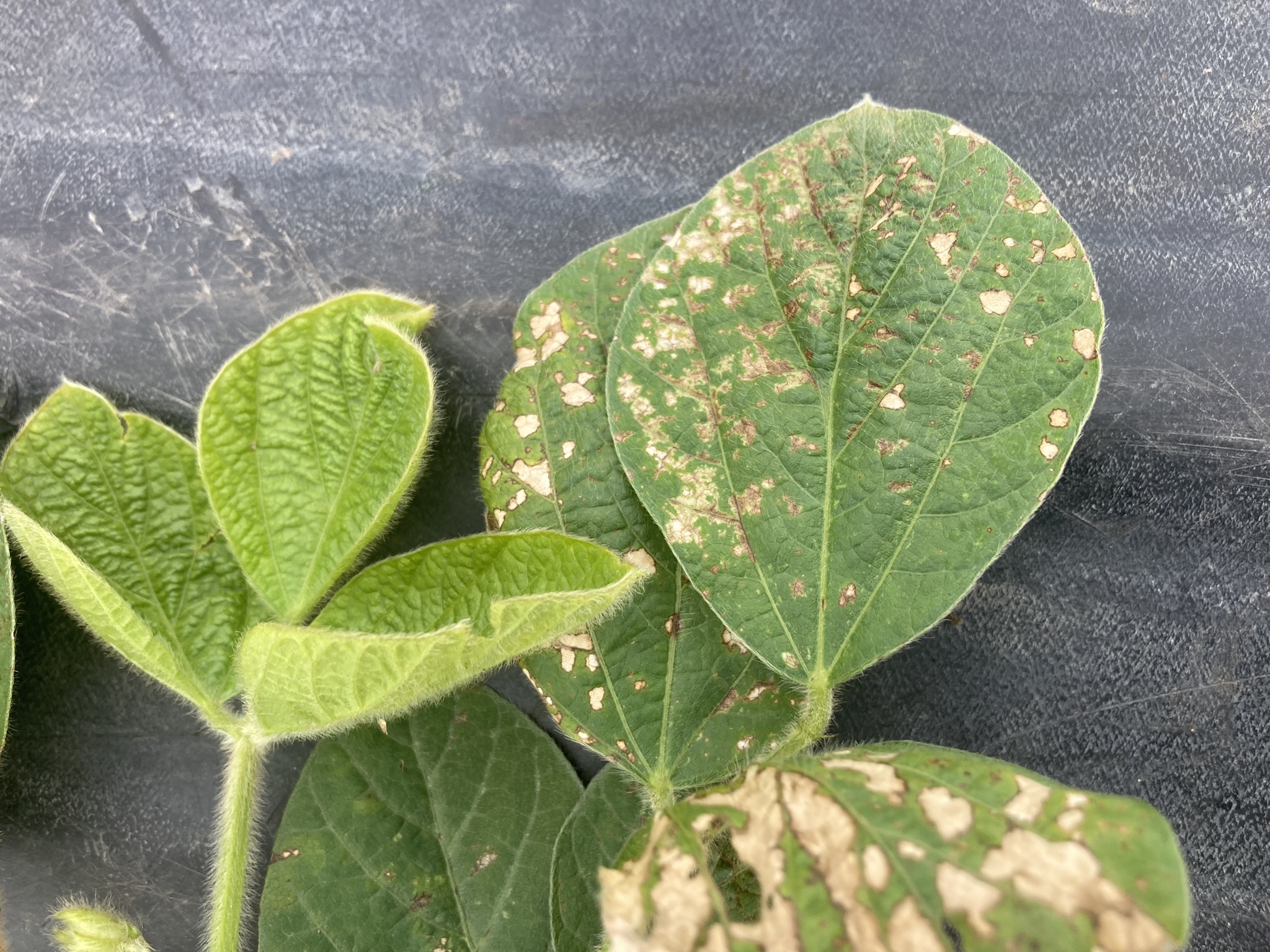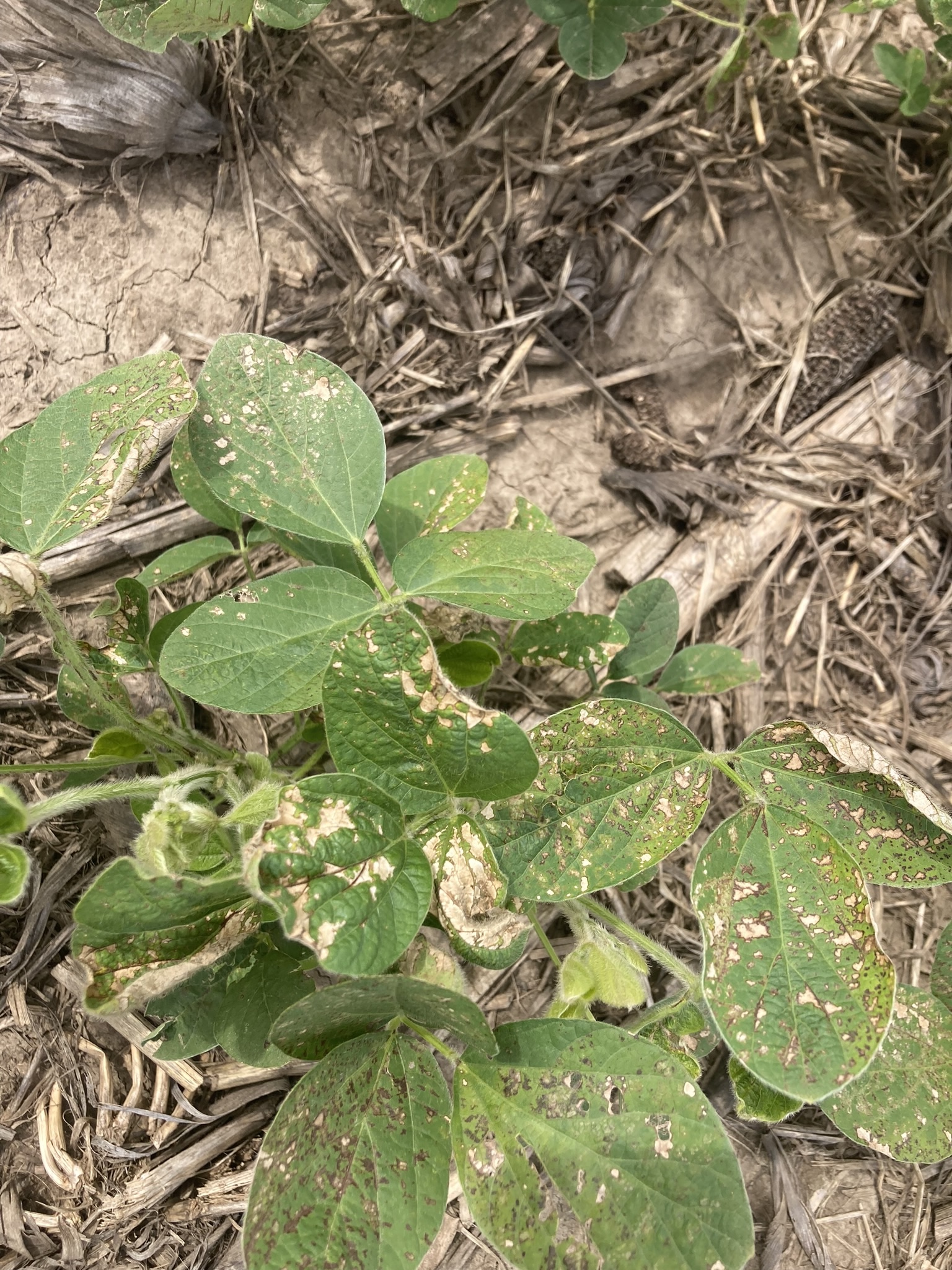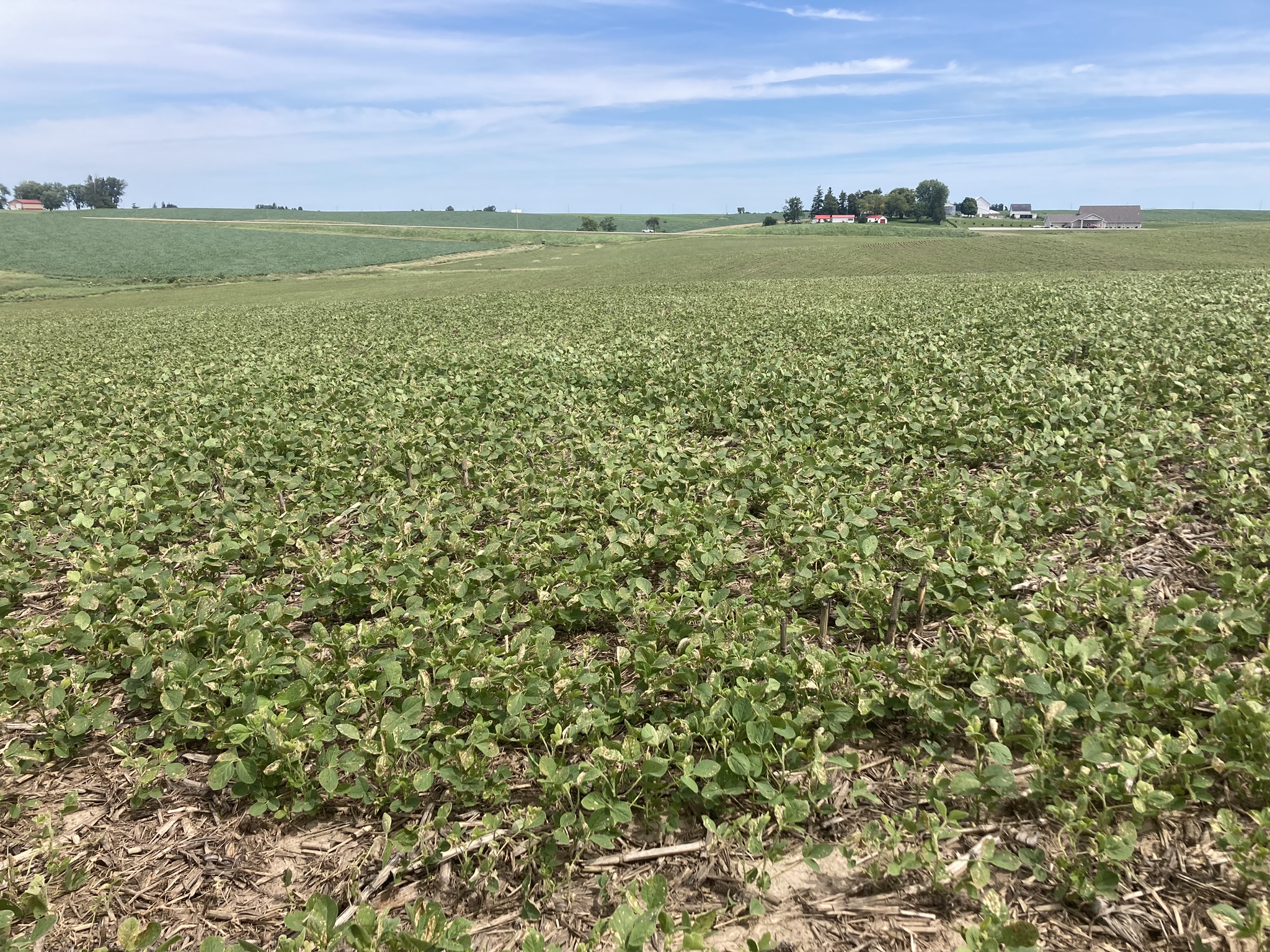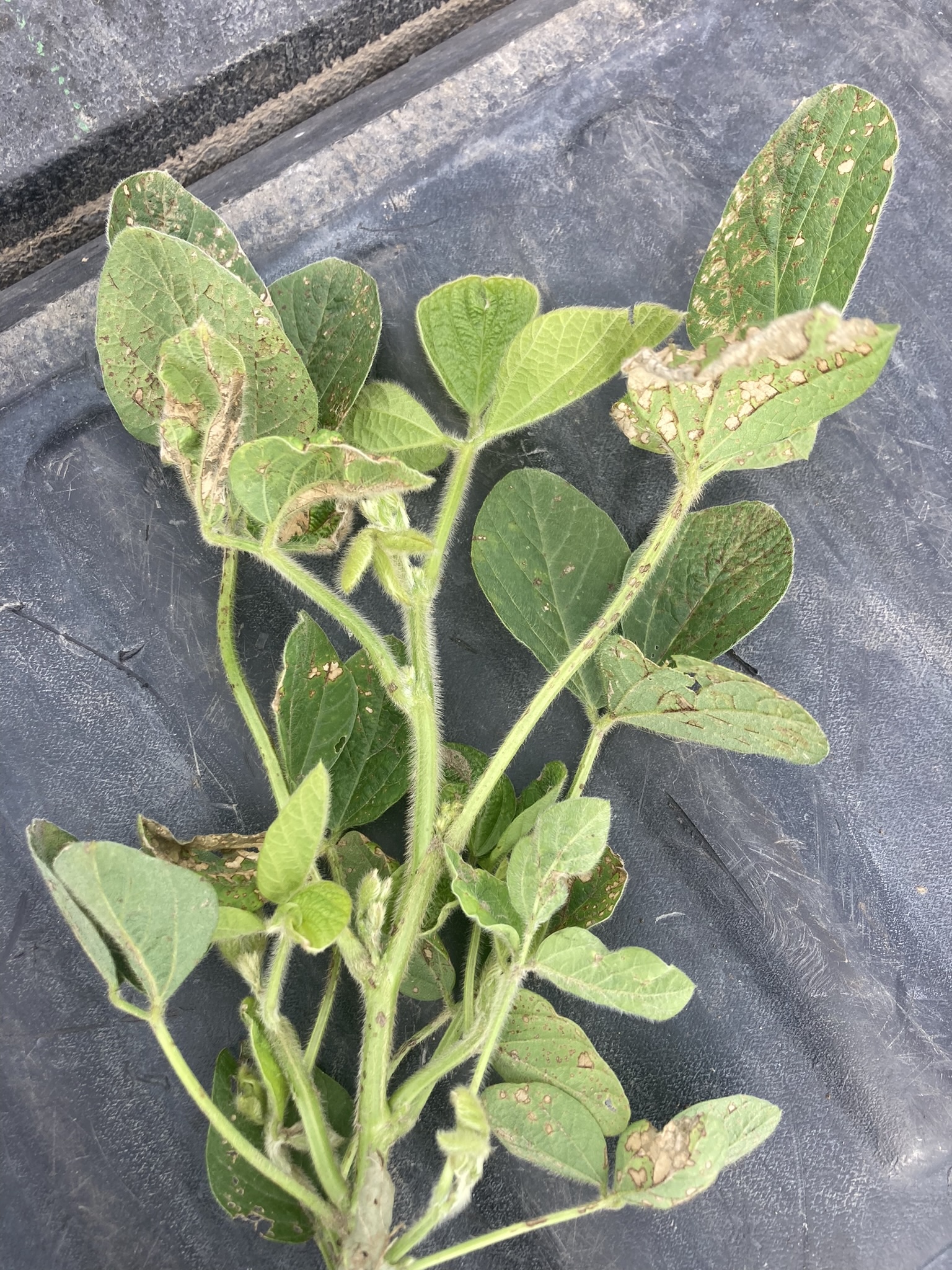The injury observed is consistent with the products applied to the field. Observe new growth for injury - the new growth in this field does not display any injury symptoms. Be aware of what herbicide injury may be expected with products being used and ALWAYS follow the label directions, especially in regard to soil type, air temperature, drought status, relative humidity, seed traits, and other stressors. Light injury most likely will not lower yield, but it may stunt growth allowing for weeds to emerge while canopy cover is reestablished. You can read more about identifying common herbicide injury symptoms in soybeans
in this article from Iowa State Extension, and
in this article from the University of Minnesota Extension.





